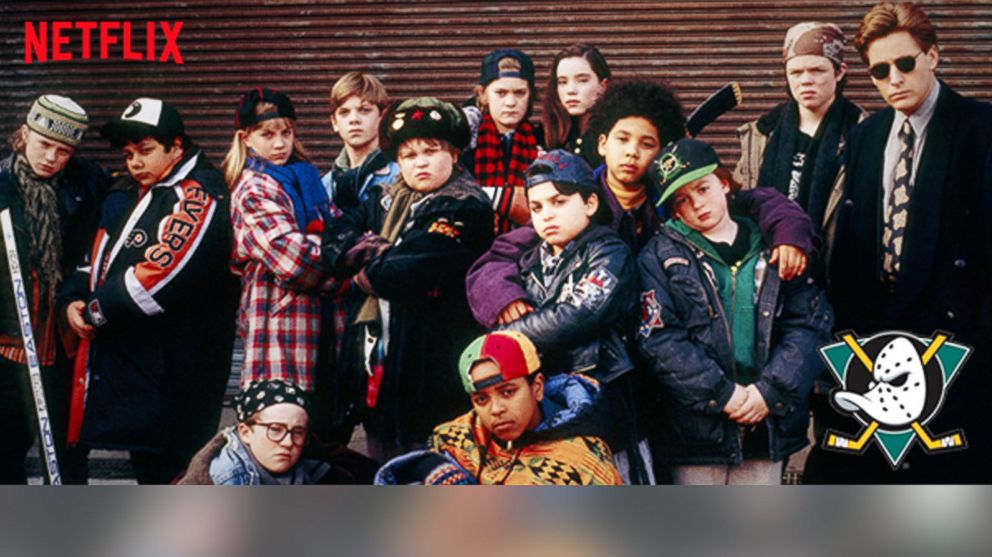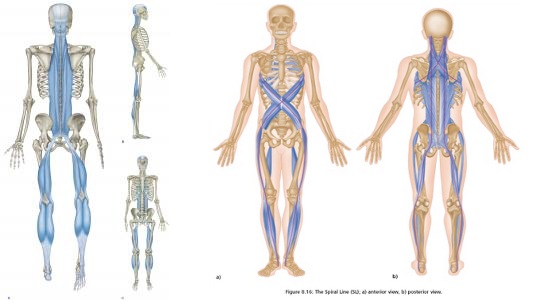 Remember the movie, “The Mighty Ducks” staring Emilio Estevez? It was an 80’s feel good movie of a group of underdog children overcoming many challenges to win the hockey championship. I love this movie and apparently I am not the only one because there are two sequels to the original. I am dating myself by choosing to use this analogy to describe how our neck is designed. The movie is best described as the “little kids with big heart” working together as a team for a common purpose, to win!
Remember the movie, “The Mighty Ducks” staring Emilio Estevez? It was an 80’s feel good movie of a group of underdog children overcoming many challenges to win the hockey championship. I love this movie and apparently I am not the only one because there are two sequels to the original. I am dating myself by choosing to use this analogy to describe how our neck is designed. The movie is best described as the “little kids with big heart” working together as a team for a common purpose, to win!
Our neck is not big and powerful like our legs. Our neck is smaller in size than our trunk. Our neck is far from being dexterous like our arms. Regardless of the lack of physical capacity, our neck loves to help in whatever it can, hence, the big heart analogy. It is not uncommon for people to have neck pain with complaints of low back, shoulder, knee, or even ankle pain. The list can include emotional and spiritual instability like stress and personal trauma. Everyone can agree that the neck is an important structure since it supports the head and brain. The neck is at the highest point of our body. It allows us to see, hear, and taste. The two factors of location and unique abilities explains the reason for the “big heart” helping mentality.
An easy demonstration of how our neck is impacted with every movement is to imagine shaking a flexible stick from the bottom of it. The greatest arc of motion happens at the top of the stick while the least is where you are holding the stick, the bottom. This is a common driver of “stiff” and/or painful nagging neck pain. In locomotion, aka walking, if one does not have good balance, the neck takes the brunt of this large arc of motion. If the body has not learned how to contain this sway, one can make this quick observation by watching people walk from behind. You can see someone with uncompensated neck pain when their head bobbles sideways. Most of the time, people have adapted to contained this sway by massive tension within the neck muscles especially via the joint compressive tendencies of our outer neck muscles like the Sternocleidomastoid, Scalenes, Upper Trapezius and Levator Scapulae muscles. You massage these neck muscles over and over, but it will tighten up because it has to work overtime to ensure that you do not look like a bobblehead when you move and walk. Massage your neck and work on your balance to be more effective in your neck care.

The reliance of our head and brain to sense our surroundings and translate our experiences, makes it a key player in this idea called compensation. As a baby, our head directs our experiences and assists in our beginning ability to roll. Rolling is a key movement pattern where the baby leverages its big head to get momentum for the body to follow into a rolling pattern. Before that, tummy time facilitates the training to pick up the head. The upper body press up move facilitates the deep core to the outer superficial back fascial line.
The fascial track/line is made famous by Dr Thomas Meyers who explains how muscles are connected and can display raw power and control simultaneously via the fascial connections. Fascia surrounds us and has millions of sensory receptors that allows us to have a heightened sense of awareness. This awareness helps our body to not be delicate and survive via the idea of compensation. One can see that the low back muscles does track up to connect to our scalp and down to the arch of our feet. Any low back tension can act like an achor, which “tugs” on our neck. The spiral line shows how our shoulder connects to our opposite hip and leg. This oblique orienation in opposite direction can produce a uncoiled and loaded spring ready to explode but cannot when one has a shoulder or hip issue. As the shoulder neighbors the neck, the neck carries this tension via a shoulder shrugging habit when one carries, reaches, and worst, at rest.
This compensation is good for short term solutions for a life or movement problem, but pose a silent threat when our body is asked to compensate as the primary answer. This is a big reason why neck pain can be diminished with medications, hands on care, and pain relief devices but commonly returns. The nagging nature of the neck pain is due the other “elephant in the room” such as physical or emotional injuries or flexibility concerns. “There is issues in the tissues.” The upper back and neck is where people carry their baggage so they can address it later on. Unfortunately, the resolution rarely happens.
The neck (cervical spine) consists of seven spinal segments. The unique design of the neck is that one of the seven does half of the rotational work! Half! 50%! This can be easily overlooked by many practitioners. Segment #1 or C1 it is called is this important player in helping us to drive and turn our head. It is located at the base of our head. A restriction in this segment has been documented to impact and result in headache, dizziness, jaw pain/malalignment, chronic neck pain, and arm numbness and tingling. There are a group of practitioners that believe this segment can impact chronic organ, medical, and nervous system overactivity.
To quickly test how much compensation maybe impacting your efficiency to move, stand on a sofa cushion or three thick pillows. Close your eyes to take your vision out of this test equation. Notice how much you are swaying. Turn your head left, right, up and down. How much swaying are you feeling. Do you clinch your jaw? Do you grip the ground with your toes like a claw? Do you brace your shoulders or splay/grip your fingers? Does your breathing get heavier? This is an inner ear test but it demonstrates that your neck plays a pivotal role in our ability to move and directs our body to stay upright.
Quack! Quack! Quack! I hope you have come to appreciate the complexity of managing the neck. It takes constant dedication to help our neck age well. A quick test to assess if your neck needs work is to bring your ear to your shoulder. If this is “tight” or looks stiff, then start by providing the TLC that it deserve. This sidebending motion is the first motion that we lose when our neck age. One can bring up “the chicken or the egg” argument, whether our neck impacts our body’s movement or vice-versa. I do not think it is black and white so a total body wellness and fitness approach is the best resolution at this time.
Contact us at revitalizerehab@gmail.com if you have any “nagging” neck or other pain. We provide 1-on-1 consultation in which we can provide expert advice and a detailed plan to assist in your recovery. One Love! Dream BIG! Move BIG!
photo credit: http://a.abcnews.com/images/Entertainment/HT_mighty_ducks_2_netflix_sk_140922_v16x9_16x9_992.jpg